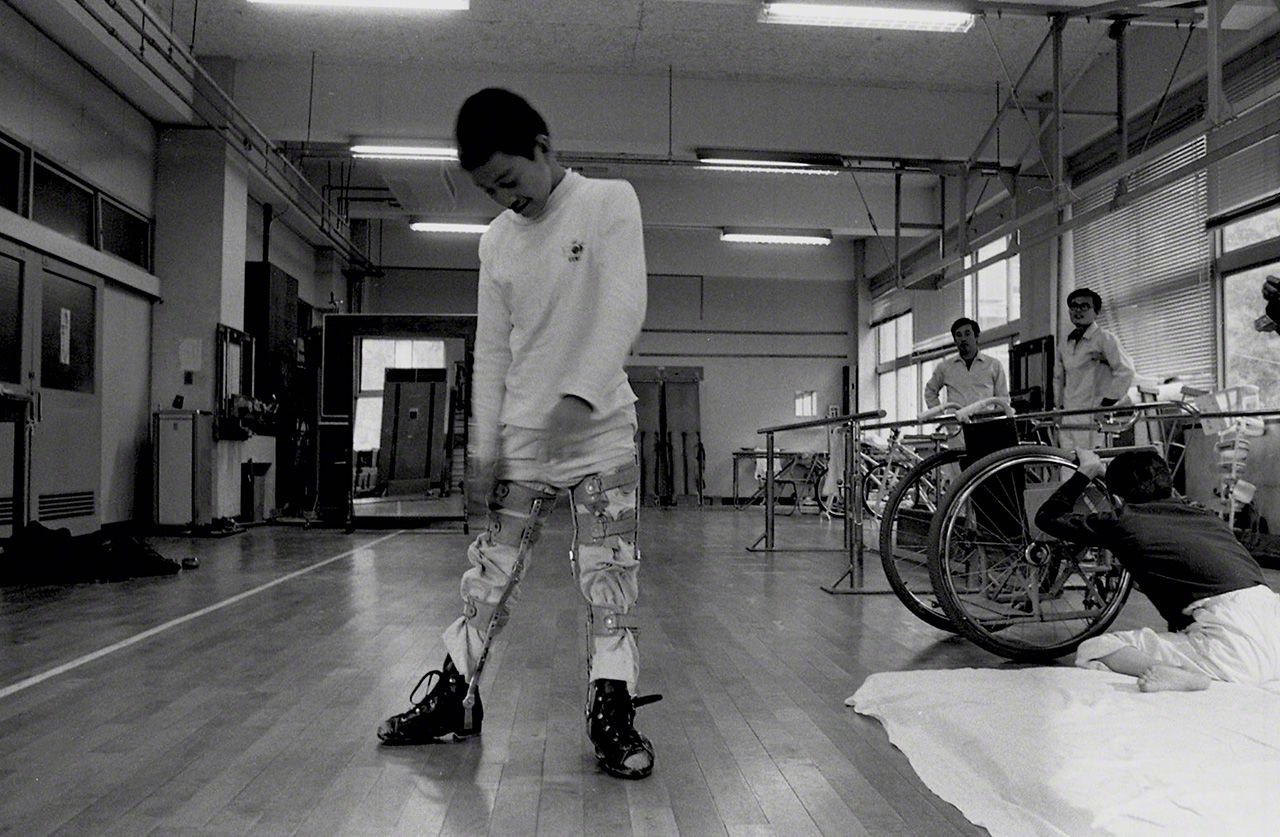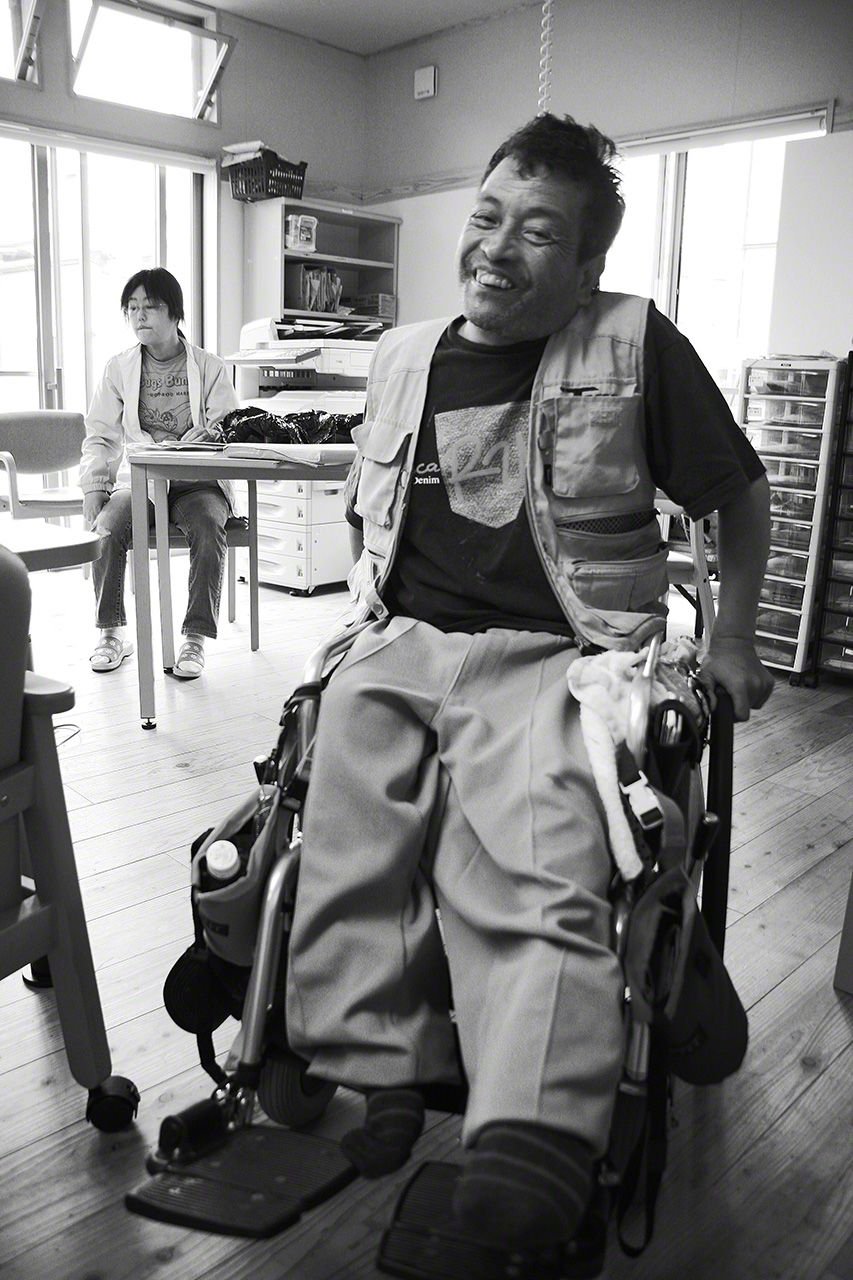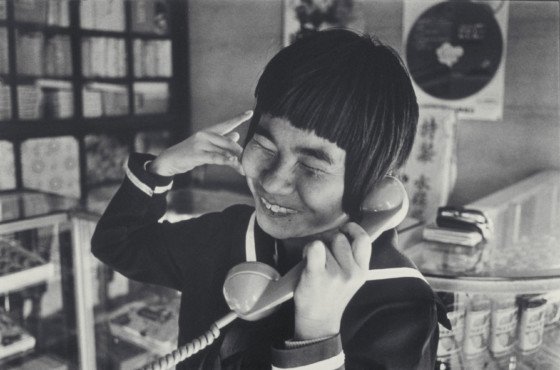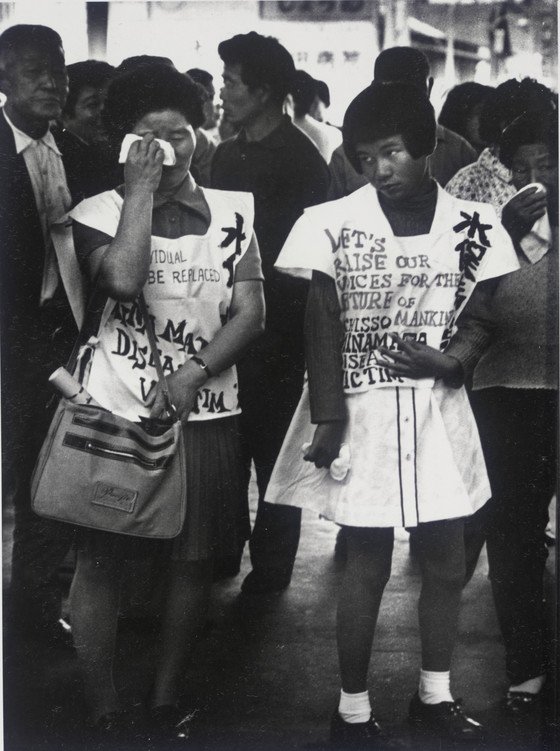The Voices of Minamata
Niigata Minamata disease victims protest in front of the health ministry building in Tokyo in May 1970. | KYODO
The Minamata disease is considered to be one of the most serious Japanese pollution incidents of the 20th century, which led to more than 2,000 victims. In 1956, mercury poisoning was caused by methylmercury released into the sea from the chemical manufacturer Chisso Corp.’s factory in Minamata, Kumamoto Prefecture. A large number of local residents began to show symptoms of poisoning after ingesting fish caught in the Shiranui Sea, a calm and resource-rich inland sea in Kyushu. Early neurological symptoms included paresthesia, ataxia, dysarthria, constriction of the visual field, and/or hearing difficulties. Severely affected children born with congenital Minamata disease were mentally disabled and had disturbed coordination, deformities of the limbs, poor reflexes, and poor nutrition and growth.
Even after the official confirmation of the disease, Chisso Corporation refused to acknowledge the link between wastewater and health problems. It wasn’t until 1968 that the government finally recognized Minamata disease as an illness caused by industrial pollution. Today, many victims are still waiting to be recognized as Minamata disease patients.
One of the most powerful ways to learn about history is through authentic voices, so this is a collection of individual stories from a few of the many victims and their families.
Masami Ogata
Masami Ogata, a storyteller at the Minamata Disease Municipal Museum in Japan, who lives with the disease. | Minamata Disease Municipal Museum
Minamata disease first caused damage to Masami Ogata’s family in September 1957. When he was nearly two years old, his grandfather Fukumatsu Ogata suddenly developed an unexplained illness, which worsened day by day, with convulsions and drooling, difficulty walking, speech problems, and other symptoms. Two months later, Fukumatsu Ogata passed away in the isolation and infectious diseases ward at the Minamata City Hospital. That was the first tragedy caused by Minamata disease in the Ogata family. However, they were never given information on the cause of the disease. Ogata’s sister Hitomi, who was born a week before her grandfather developed the illness, was born with a disability, again without explanation, then other members of the Ogata family started falling ill one after another. For 10 years, Ogata’s application to be officially declared a Minamata disease victim was rejected until, on March 15, 2007, the Governor of Kumamoto Prefecture declared that she would recognize him as a Minamata disease patient.
Words of Masami Ogata:
“Rumors spread though, and people would say that no one should marry a member of the Ogata family. I got married at the age of 20, but on the day of our engagement, my wife had a phone call. Naming me, the person said to her, “the man you are trying to marry is a Minamata disease victim. The whole family will be annihilated. Are you okay to go to such a place as a bride?”
“When I was younger, I hid my disease from others. I would change the subject if it came up, and say that it had nothing to do with me. It was my daughter who said to me that I had to live honestly. Her words stuck in my chest, and I chose to stop hiding, at the age of 38.”
“Minamata disease is by no means over but, by showing people around the world what victims can do and achieve, I think the world can take courage."
Eiko Ueno
Eiko’s husband, Tadashi, noticed his hands shaking while fishing and pulling up the net. From this moment on, a fierce battle against Minamata disease began. Eiko’s husband died 13 days after the onset of the disease and her daughter, Ryoko, was born soon after. One night in March 1961, Ryoko started rattling and clenching her teeth, her eyes black and white, suffering from violent convulsions. In March of 1961, Eiko’s daughter, Ryoko, passed away due to fetal Minamata disease. At the time, the cause of death was unknown and many patients were helpless, just wanting to die.
Words of Eiko Ueno:
“I wanted Ryoko to call me Mom just once. The Minamata disease took everyone away from me. I am not the only one. Minamata disease patients and their families, even when they were in physical pain, in agony, or wandering in the depths of despair, they have continued to walk forward to appeal as much as they can that such a tragedy should not be repeated again. Please never let the sacrifice of the lives of the many people who died from Minamata disease be in vain. Please promise me that you will take good care of nature so that you will not have to go through the painful and sad experience as I did. Please don’t forget about Minamata disease.”
Minamata Disease Municipal Museum in Minamata City
Poem by Eiko Ueno, translated to English:
My dear Ryoko, my dead daughter. Are you still sleeping?
I wonder if you can see if your arms and legs will move.
As I am your mother, I want to see you again with my own eyes.
My Ryoko, you couldn’t see anything in this world.
Are you walking now? Are you running now?
My poor Ryoko, you couldn’t call me Momma.
It must have been hard for you.
You must have been lonely.
As your mother, I want to apologize to you from the bottom of my heart.
Sumiko Kaneko
Sumiko Kaneko was recognized as a patient in 1972. She also has a son who suffers from congenital Minamata disease and has been in a wheelchair for the past nine years. Kaneko lost her husband to the disease at the age of 25 .
Words of Sumiko Kaneko:
“He ( Kaneko’s son) must feel miserable that he cannot express his feelings to people, while I myself have had sleepless nights thinking about him. I want young people to learn something from my experiences so they can live in peace,”
The suffering of Kaneko and her family illustrates that the tragedy continues at a time when the 66th anniversary of the disease’s official recognition was marked in early May.
Shinobu Sakamoto
Shinobu Sakamoto | KYODO
“I was exposed to mercury pollution when I was in my mother’s womb. I was born with fetal Minamata Disease in 1956. When I was 15, in 1972, I went to Stockholm as a citizen and victim of pollution. The fetal Minamata patients including myself are getting worse year by year. Today, I must repeat my message—Minamata Disease is not over. Pollution must end. We must protect women and unborn children from toxic pollution.”
Nagai Isamu


Over 60 years have passed since the spread of Minamata disease. However, many victims and their families have yet to gain justice for what they were put through. As a society, we need to recognize the irreparable damage that environmental pollution can cause and what actions we can take to prevent a tragedy like this from happening again.
To learn more about Minamata Disease and ways you could help, visit:
Mercury and Minamata Disease: https://youtu.be/80KJ9gqHrYo
Sources
“EDITORIAL: Many Minamata Disease Victims Still Waiting for Overdue Relief.” n.d. The Asahi Shimbun. Accessed May 24, 2022. https://www.asahi.com/ajw/articles/14340051.
“First Person: Telling the Tragic Story of Mercury Poisoning in Japan.” 2021. UN News. October 30, 2021. https://news.un.org/en/story/2021/10/1103842.
Hirano, Keiji. 2006. “Minamata Disease Turns 50, Still Taking Toll.” The Japan Times. February 21, 2006. https://www.japantimes.co.jp/news/2006/02/21/national/minamata-disease-turns-50-still-taking-toll/.
Livingstone, D. R., and S. Gallacher. 2003. “SHELLFISH | Contamination and Spoilage of Molluscs and Crustaceans.” In Encyclopedia of Food Sciences and Nutrition, 5228–45. Elsevier.
“Minamata Disease Patients Mark 65 Yrs since Official Recognition amid Concerns for Future.” n.d. The Mainichi. Accessed May 24, 2022. https://mainichi.jp/english/articles/20210501/p2a/00m/0na/022000c.
“Minamata: Homage to W. Eugene Smith.” 2019. Nippon.com. October 15, 2019. https://www.nippon.com/en/images/i00051/minamata-homage-to-w-eugene-smith.html.
Programme, U. N. Environment. 2017. “Shinobu Sakamoto,Minamata Disease Survivor Call to End Mercury Poisoning Globally.” Youtube. November 30, 2017. https://www.youtube.com/watch?v=nN8c98aFQJ4.
“祈りの言葉 2019年/上野 エイ子.” n.d. Accessed May 24, 2022. https://minamata-impact.com/2021/09/16/prayers-2019/.








